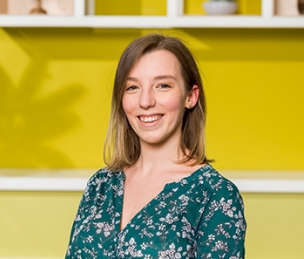Displaying 1 - 2 of 2
-
Mazzini, S., Yadnik, S., Timmers, I., Rubio-Gozalbo, E., & Jansma, B. M. (2024). Altered neural oscillations in classical galactosaemia during sentence production. Journal of Inherited Metabolic Disease, 47(4), 575-833. doi:10.1002/jimd.12740.
Abstract
Classical galactosaemia (CG) is a hereditary disease in galactose metabolism that despite dietary treatment is characterized by a wide range of cognitive deficits, among which is language production. CG brain functioning has been studied with several neuroimaging techniques, which revealed both structural and functional atypicalities. In the present study, for the first time, we compared the oscillatory dynamics, especially the power spectrum and time–frequency representations (TFR), in the electroencephalography (EEG) of CG patients and healthy controls while they were performing a language production task. Twenty-one CG patients and 19 healthy controls described animated scenes, either in full sentences or in words, indicating two levels of complexity in syntactic planning. Based on previous work on the P300 event related potential (ERP) and its relation with theta frequency, we hypothesized that the oscillatory activity of patients and controls would differ in theta power and TFR. With regard to behavior, reaction times showed that patients are slower, reflecting the language deficit. In the power spectrum, we observed significant higher power in patients in delta (1–3 Hz), theta (4–7 Hz), beta (15–30 Hz) and gamma (30–70 Hz) frequencies, but not in alpha (8–12 Hz), suggesting an atypical oscillatory profile. The time-frequency analysis revealed significantly weaker event-related theta synchronization (ERS) and alpha desynchronization (ERD) in patients in the sentence condition. The data support the hypothesis that CG language difficulties relate to theta–alpha brain oscillations.Additional information
table S1 and S2 -
Mazzini, S., Holler, J., & Drijvers, L. (2023). Studying naturalistic human communication using dual-EEG and audio-visual recordings. STAR Protocols, 4(3): 102370. doi:10.1016/j.xpro.2023.102370.
Abstract
We present a protocol to study naturalistic human communication using dual-EEG and audio-visual recordings. We describe preparatory steps for data collection including setup preparation, experiment design, and piloting. We then describe the data collection process in detail which consists of participant recruitment, experiment room preparation, and data collection. We also outline the kinds of research questions that can be addressed with the current protocol, including several analysis possibilities, from conversational to advanced time-frequency analyses.
For complete details on the use and execution of this protocol, please refer to Drijvers and Holler (2022).Additional information
additionally, exemplary data and scripts

Share this page